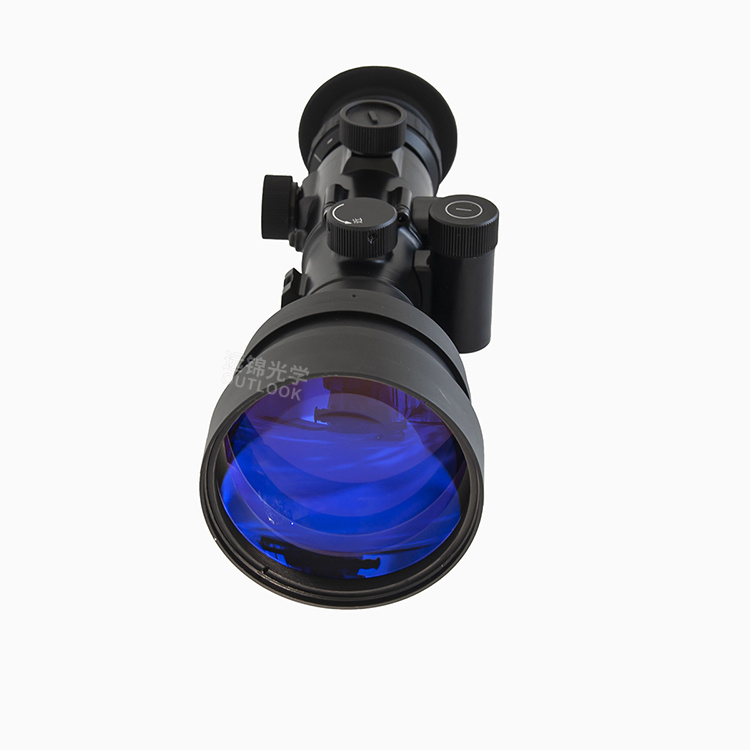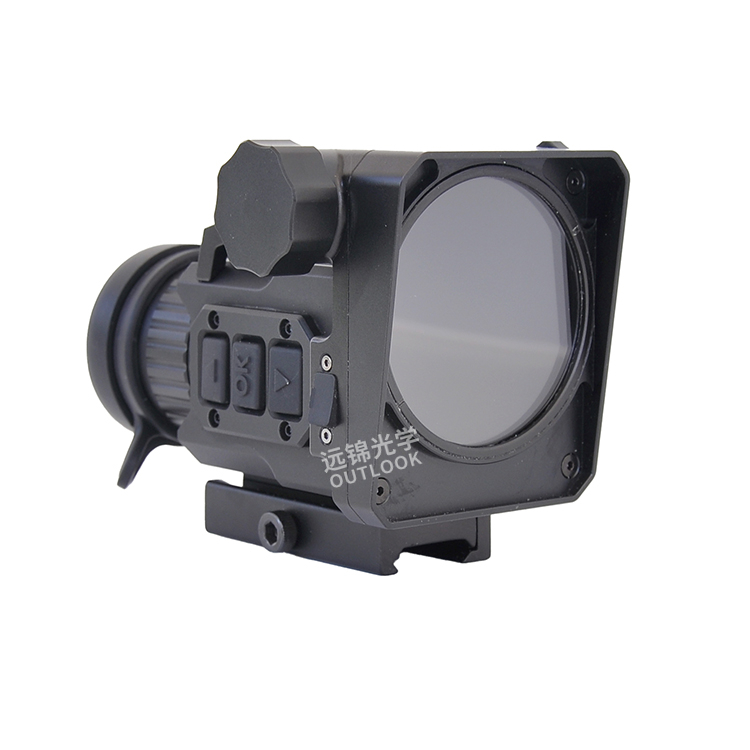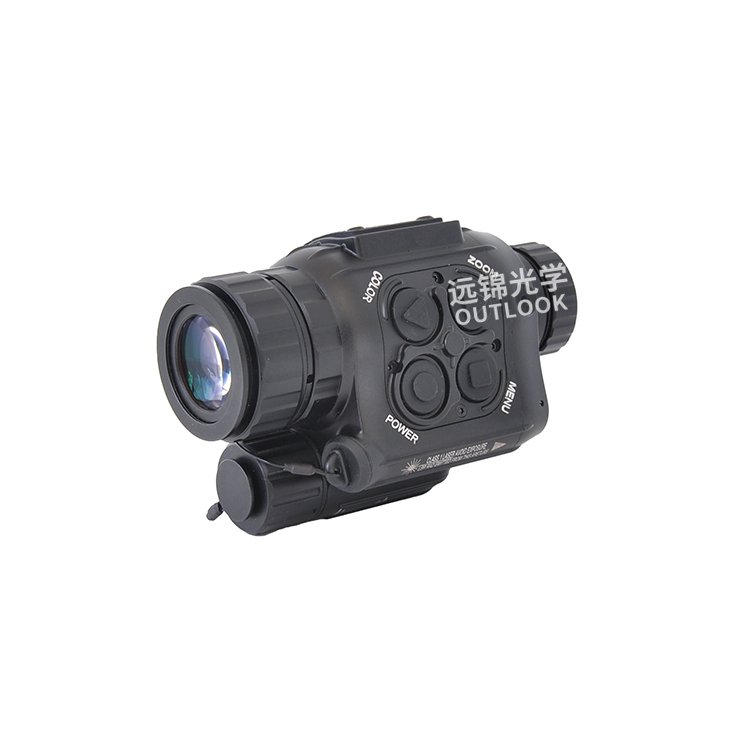Thermal Scope and Night Vision Scope
The following is a detailed analysis of thermal scope for hunting, including their core features, typical applications, and operating principles:
I. Features of thermal scope for hunting
1. All-Weather Operation of thermal scope for hunting
Thermal scope entirely on the target's own thermal radiation, requiring no ambient light (such as moonlight or starlight). It can be used in absolute darkness, smoke, haze, and other conditions.
2. Penetration Advantages of thermal scope for hunting
Thermal scope can detect living targets through light obstructions (such as leaves, grass, and thin walls), but has limited penetration into dense materials like glass and metal.
3. Target Recognition of thermal scope for hunting
Using temperature differential imaging, thermal scope for hunting can clearly distinguish warm-blooded organisms (such as humans and animals) from the background (such as rocks and vegetation), effectively detecting camouflage.
4. Environmental Adaptability of thermal scope for hunting
Thermal scope for hunting can operate stably in extremely low temperatures (below -30°C) or high temperatures (above 50°C). However, heavy rain and snow may reduce image clarity.
5. Technical Limitations of thermal scope
Resolution is typically lower than that of low-light devices (mainstream 384×288 pixels), making it difficult to recognize facial details. Target contrast may also decrease in high-temperature environments (such as during summer daylight hours).
II. Core Applications of Thermal Scope for Hunting
1. Military/Law Enforcement
Night operations: Special forces infiltration and counterterrorism operations (e.g., heat source detection within buildings).
Border surveillance: Detecting illegal border crossings of individuals or animals.
Law enforcement searches: Tracking hidden suspects or evidence (e.g., residual engine heat from recently used vehicles).
2. Hunting and Wildlife Research
Tracking warm-blooded animals (e.g., deer and wild boar), particularly suitable for hunting in dense forests or at night.
Nocturnal animal behavior observation in scientific research (avoiding interference from visible light).
3. Civilian and Industrial Applications
Search and rescue: Locating survivors after earthquakes/avalanches (due to the temperature difference between body temperature and debris).
Equipment maintenance: Detecting circuit overheating or pipeline leaks (a feature of some industrial-grade thermal imagers).
III. Working Principle of Thermal Scope for Hunting
1. Infrared Radiation Reception
All objects with temperatures above absolute zero (-273°C) emit infrared radiation. Thermal scope for hunting capture mid- and far-infrared radiation with wavelengths of 8-14μm using indium antimonide (InSb) or vanadium oxide (VOx) detectors.
2. Signal Conversion and Processing of Thermal Scope for Hunting
The detector converts the infrared signal into an electrical signal, which is processed by an FPGA chip to generate a temperature distribution matrix. High-temperature areas appear bright (white/yellow), and low-temperature areas appear dark (black/blue).
3. Image Display Technology of Thermal Scope
Images are output using an AMOLED or LCoS microdisplay. Some high-end models support pseudo-color modes (such as black-hot/white-hot inversion) to optimize viewing in different scenarios.
4. Auxiliary Function Integration
Modern devices often integrate features such as laser ranging, Wi-Fi image transmission, and AI target marking (such as automatic selection of human figures).
Night Vision Scope
The following is a detailed analysis of night vision scope, covering the core features, typical uses, and operating principles of night vision scope, as well as a comparison with thermal scope:
I. Characteristics of night vision scope
1. Ambient Light Dependence of night vision scope
Relying on weak ambient light (moonlight, starlight, and urban light pollution), the night vision scope typically require a minimum illumination of 0.001 lux (equivalent to a moonless, starlit night). However, the night vision scope fail in complete darkness.
2. High-Resolution Imaging
Image clarity pf night vision scope significantly surpasses thermal imaging (up to 64 line pairs/mm), enabling recognition of details such as facial features and text, making them suitable for scenarios requiring precise identification.
3. Passive Concealment
Does not actively emit infrared fill light (unlike earlier active infrared night vision devices), making the night vision scope less susceptible to detection by enemy countermeasures.
4. Environmental Limitations
Requires automatic gating protection in bright light environments (such as sudden exposure to direct headlights). Performance of night vision scope degrades dramatically in fog and haze.
5. Cost and Battery Life of Night Vision Scope
The price of night vision scope is about 1/3-1/2 of that of a thermal scope (mainstream models cost 2000-5000), and the battery life is up to 20-50 hours (on a single AA battery).
II. Core Applications of night vision scope
1. Military Tactical Operations
Night Assaults: Indoor CQB operations (requires identification of address plates and weapon models).
Reconnaissance and Surveillance: Observation posts record details of enemy personnel activities (such as rank and equipment).
2. Law Enforcement and Security
Nighttime drug interdiction, hostage rescue, and other scenarios requiring rapid target identification.
Critical Facility Patrols (such as perimeter monitoring of nuclear power plants).
3. Civilian Applications
Nighttime Hunting (requires distinguishing prey species and gender).
Astronomical Observation Aids (observing nebulae/planets at low magnification).

III. Working Principles of Night Vision Scope
1. Photon Collection and Conversion
The objective lens collects ambient light (including near-infrared light) and converts the photons into electrons via a GaAs photocathode, achieving a conversion efficiency of 30% (third-generation low-light-level technology).
2. Electron Multiplication and Amplification
The electron stream passes through a microchannel plate (MCP), achieving over 50,000x gain through secondary emission while maintaining the image geometry.
3. Phosphor Screen Imaging
The multiplied electrons strike a P43 phosphor screen, converting them into visible light, which is ultimately output through the eyepiece or a digital sensor.
4. Modern Technology Expansion
Digital Low-Light-Level: Some newer models use CMOS sensors instead of traditional MCPs and support video recording and wireless image transmission (such as the Sionyx Aurora).
Fusion Mode: Combined with thermal imaging (such as the ENVG-B system), the thermal radiation profile and low-light-level details are superimposed.
Selection Recommendations between Thermal Scope and Night Vision Scope
When thermal scope is preferred:
1. Dark or extreme environments: such as caves, dense forests, and smog.
2. Searching for hidden targets: Detecting hidden living beings (humans or animals), vehicle engines, and other heat sources.
3. All-weather requirements: Suitable for use day and night, in fog and haze, and in dusty conditions.
When night vision scope is preferred:
1. Budget constraints: Cost-sensitive and in environments with weak light sources (such as moonlight).
2. Required detail recognition: Observing facial features and text signs (thermal imaging has poor detail reproduction).
3. Fast-moving targets: Low-light scopes offer lower latency and are suitable for dynamic shooting.



